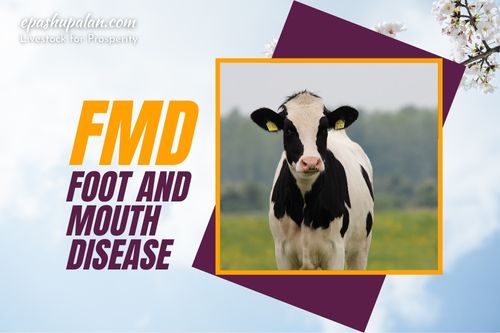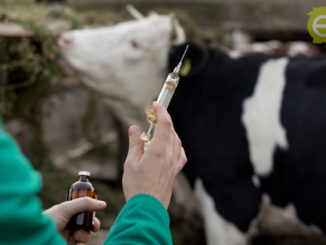Abstract
The outbreaks of foot-and-mouth disease (FMD) in Europe in 2001 identified the vulnerability of the intensive agricultural industries in Europe and North America to the economic consequences of the introduction of a highly infectious animal disease. Foot-and-mouth disease (FMD) is endemic in India and causes severe economic loss. Status of FMD in the country for five fiscal years is presented. Outbreaks were more in number in 2007-2008 than 2010-2011. Three serotypes of FMD virus (O, A and Asia1) are prevalent. Serotype O was responsible for 80% of the confirmed outbreaks/cases, whereas Asia1 and A caused 12% and 8%, respectively. Geographical region-wise assessment indicated varying prevalence rate in different regions viz; 43% in Eastern region, 31.5% in Southern region, 11.6% in North-eastern region, 5% Central region, 4.4% Western region and 4% in Northern region. Highest number of outbreaks/cases was recorded in the month of September and lowest in June. Vaccines are used to cover all the susceptible livestock population.
This is expected to minimise economic losses to the livestock owners due to the disease. The Government of India has been carrying out intensive FMDCP in a phase wise manner since 2003–2004 and subsequently by 2017–2018; it has covered all the districts of the country. The FMDCP is intending to vaccinate all the susceptible livestock population of the country such as cattle, buffalo, sheep, goats and pigs. That exercise was adopted to make the country free of the disease till 2025–2030.
Introduction
Foot-and-mouth disease (FMD) is one of the most important viral diseases of large ruminants in India. Foot-and-mouth disease (FMD) is an economically significant disease of cattle, sheep, goats and pigs, and cloven-hoofed wildlife species. It causes production losses, particularly to the dairy and pig industries and high mortality in young animals, and is a major constraint to international trade in live animals and their products. The affected large ruminants exhibit high fever, excessive frothy salivation, vesicles in the mouth specially on the tongue, teats and inter-digital space and decrease in milk yield due to reduced feed intake.

Cause
The disease is caused by the Foot-and-mouth disease virus (FMDV) classified in the genus Aphthovirus in the family Picornaviridae. It is a highly contagious viral disease transmitted mainly by close contact and through aerosols and respiratory route.
Symptoms
On introduction to a herd or flock the Foot and Mouth Disease (FMD) virus can spread very rapidly by direct and indirect transmission. Affected animals have a high temperature, which is followed by the development of blisters chiefly in the mouth and on the feet. Affected animals lose condition and secondary bacterial infections may prolong convalescence. The most serious effects of the disease however are seen in dairy cattle. Loss of milk yield will certainly be experienced. Chronic mastitis may develop and the value of a cow is permanently reduced. Abortion, sterility and chronic lameness are commonplace and in some cases chronic heart disease occurs.
Diagnosis
Presently FMD diagnosis is being carried out using techniques such as Virus Isolation (VI), Sandwich-ELISA (S-ELISA), Liquid-Phase Blocking ELISA (LPBE), Multiplex-PCR (m-PCR), and indirect ELISA (DIVA), and real time-PCR can be used for detection of antibody against nonstructural proteins. Nucleotide sequencing for serotyping, microarray as well as recombinant antigen-based detection, biosensor, phage display, and nucleic-acid-based diagnostic are on the way for rapid and specific detection of FMDV.
Vaccines and Vaccination for FMD in India
FMD vaccines are produced by growing live virus in BHK-21 cells in roller bottles or in suspension under bio-secure conditions in large volumes. The virus is harvested, concentrated and inactivated, and mixed for use with a buffer and adjuvant, either oil or aluminium hydroxide and saponin. The potency of the vaccine is measured in PD50, such that a vaccine with a PD50 of six, when used at one-sixth the recommended dose will protect 50% of cattle inoculated with live virus, homologous to the vaccine virus, 21 days after single vaccination.
The minimum potency for FMD vaccine should be three, but higher potency vaccine (containing more inactivated virus antigen per dose) is available for vaccine banks. Cattle are normally vaccinated twice, starting at an age when any maternally derived immunity will no longer interfere with the development of active immunity, and then every 4 or 6 months, depending on the likelihood that they will be exposed to infection. The use of vaccine in a naive population, such as would occur in a previously free country trying to control an introduction of virus will not be immediately effective. Following the first dose of vaccine, and depending on the potency of the vaccine, immunity will not develop for 4–5 days—higher potency vaccines induce earlier immunity and are therefore recommended for vaccine banks for non-vaccinating countries that retain the option to vaccinate to control an outbreak, such as European countries, Japan, USA, Canada, Mexico, Australia and New Zealand
Conclusion
India is having a will to prevent and control Foot-and-mouth disease, an economically important viral disease of livestock which causes huge annual losses of about ₹ 200 billion. In the past, India has successfully eradicated Rinderpest and Poliovirus. India has a mechanism and expertise in place to prevent and control FMD and eradicate it by 2025–2030
References
- Subramaniam, S., et al. “Status of Foot‐and‐mouth Disease in India.” Transboundary and emerging diseases 60.3 (2013): 197-203.
- Audarya, S. D. “Foot-and-Mouth Disease in India: Past, Present and Future Outlook-A Review.” Some RNA Viruses (2020).
- Longjam, Neeta, et al. “A brief review on diagnosis of foot-and-mouth disease of livestock: conventional to molecular tools.” Veterinary medicine international 2011 (2011).
- Laor O, Torgersen H, Yadin H, Becker Y. Detection of FMDV RNA amplified by the polymerase chain reaction (PCR) Journal of Virological Methods. 1992;36(3):197–207.
| The content of the articles are accurate and true to the best of the author’s knowledge. It is not meant to substitute for diagnosis, prognosis, treatment, prescription, or formal and individualized advice from a veterinary medical professional. Animals exhibiting signs and symptoms of distress should be seen by a veterinarian immediately. |






Be the first to comment